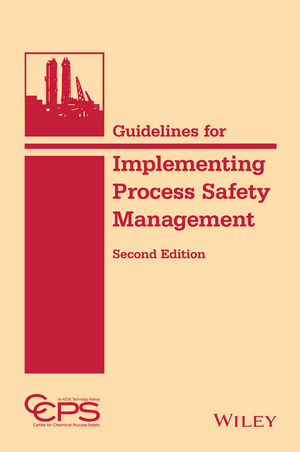What training and resources are essential for ensuring electrical safety?

Credit: Getty Images
Electrical safety is one of the most critical industrial health-and-safety categories today. Electrification is rising across many industries, making these hazards more common and severe, so employers must emphasize caution. Mitigation steps and personal protective equipment (PPE) are important in this endeavor, but electrical safety training is essential.
Many — if not most — workplace safety incidents stem from human error. Consequently, providing the proper training and resources is central in preventing injuries. Here’s what that training should include for employees working near electrical hazards.
General hazard recognition
The most foundational part of electrical safety training is learning to recognize these hazards. All employees must be able to spot threats like frayed wires or improper use of extension cords. Even workers who don’t work directly with electrical systems but face comparable risk of injury from these hazards must receive this training under OSHA guidelines.
Offering on-the-job training during onboarding is an effective way to cover this education. Managers should go over specific risks employees may encounter in their work, even if the workplace has never experienced an incident involving them before.
In this training, be sure to emphasize why these hazards pose a risk. Explaining what exposed live wires and similar threats can do to someone solidifies their urgency, which promotes adherence to safety policies.
Electrical theory
Employees who regularly work with electrical systems should also receive training in electrical theory. Knowing how electricity works is an integral part of journeyman electrician classes because it gives context to hazards they may encounter. It also helps recognize unusual risks their initial training may not cover and makes it easier to know how to manage each threat.
Electrical theory includes concepts like how electrical currents work, Ohm’s Law, Farraday’s Law and magnetism. Workers don’t necessarily need collegiate-level classes on these topics, but they should have a working knowledge of them and their real-world applications.
The more employees understand how electricity works, the better they’ll be able to manage electrical hazards. That’s particularly important for workers who may service equipment in the field where resources are scarce and they’re working alone.
Hazard communication protocols
Communication standards are another crucial part of electrical safety training. Failure to communicate workplace hazards effectively is the second most common OSHA violation, partly because they’re easy to overlook. However, a clear communication standard is crucial for staying safe.
These standards include steps for telling others in the workplace about an emergency and flagging procedures for non-time-sensitive hazards. If a business doesn’t operate in an industry with specific requirements or widely accepted standards under this umbrella, it should develop its own.
Color-coded labels for different hazards, written warnings about voltages and time requirements for alerting other employees are all critical factors to consider. All workers with a reasonable risk of injury from electrical equipment should receive training on these protocols, not just qualified electricians.
Equipment-specific knowledge
Employees should also undergo training on the specific equipment they’ll use or encounter in their daily work. Different jobs require varying tools and infrastructure, each with unique hazards and best practices. These vary too widely for every worker to know every equipment-specific risk, so this training should emphasize what’s most relevant to their situation.
Transformer repair workers must replace insulating fluid when working with fluid-filled transformers, so they must learn how to handle these substances safely. By contrast, a worker on a factory floor doesn’t need this knowledge but should know where the emergency shutoff switch on an industrial robot is.
Classes for journeyman electricians should include equipment-specific risks for standard systems they may encounter, like pad mount transformers and smart thermostats. Workers in a single workplace can get by with on-the-job training about site-specific tools and their threats.
PPE guidelines and best practices
PPE is another essential component of electrical safety. Most workplaces should already recognize the need for insulating PPE, but training on how to use it effectively is easier to overlook.
It’s not enough to simply equip employees with protective equipment. They must also know how to inspect it for defects, wear it properly, when to equip it and when it’s safe to remove it. These steps may seem straightforward, but they’re easy to forget and can dramatically impact workplace safety.
High temperatures, humidity and UV light can deteriorate rubber products, so employees should know how and why to store insulating gloves and similar PPE properly. They should also know how to report cracks, holes and other issues in line with hazard communication standards. These steps will ensure workers experience their PPE’s full benefits.
Emergency response
Incident prevention is the most important focus of electrical safety training. However, businesses must recognize that even with extreme caution, accidents can still happen. Consequently, employees must know how to respond to electrical accidents.
Companies should outline specific protocols for various electrical systems-related incidents. These should include steps like shutting off a system’s power, treating any resulting injuries and reporting the incident. After developing these procedures, businesses should train all employees in them.
Teams should rehearse emergency scenarios if electrical hazards are prevalent enough in a workspace. Regularly practicing these events will ensure employees don’t forget response protocols.
Ongoing training
It’s similarly essential to recognize that best practices in electrical safety change over time. Electrical systems are evolving and taking on new roles quickly, so professionals working with them will have to adapt.
Transformers are becoming increasingly popular cybercrime targets, so electrical workers in critical industries should receive cybersecurity training. Integrators and other employees working with building electrical systems should learn about Internet of Things devices and their unique considerations.
Businesses must regularly review changes like this in their industries to see if their training could adapt. As new technologies and best practices emerge, employees working with them should undergo updating training programs to keep up with these shifts.
Electrical safety training is crucial
Electrical hazards are common and can be highly dangerous. As electrical devices play an ever-growing role in business and everyday life, understanding how to use them safely becomes increasingly critical.
Electrical safety training must cover these seven categories. Not every employee needs extensive education, but all workers should know how to effectively recognize, manage and communicate the hazards they’ll face.
Looking for a reprint of this article?
From high-res PDFs to custom plaques, order your copy today!










